
















In 2019, the National Military Spouse Network (NMSN) published its inaugural White Paper, theorizing that when military spouses achieve career portability and stability, the entire military family unit thrives. Today, we are thrilled to expand this conversation and challenge our community to direct the same energy and dedication to what we believe will be the next phase of military spouse employment support: the military spouse transition
The military spouse transition—from life within the active-duty community to life as a veteran spouse—presents unique challenges that are often overlooked. Yet this phase is critical, not only for the individuals and families experiencing it, but also for the broader community that seeks new, effective strategies to ensure their success.
Last year, our 2024 White Paper urged our community to pause and reconsider the assumptions surrounding military spouse employment. One lingering assumption is the lens through which we view military spouses. Just a few decades ago, military spouses were seen merely as an appendage of the service member, and resources dedicated to supporting them were rarely customized. Today, that landscape has changed—tailored solutions and employment programs are abundant, reflecting an evolved understanding of the military spouse experience. Unfortunately, this lens has not yet shifted for veteran spouses.
Resources for veteran spouses have often been extensions of the benefits provided to active-duty spouses, rather than intentionally curated solutions tailored to their evolving needs. This approach, while well-intentioned, fails to recognize the distinct realities veteran spouses face. It’s a familiar challenge. When NMSN launched in 2010, military spouse employment was considered a “nice-to-have” rather than an essential factor affecting operational readiness. Through persistent advocacy,
we’ve worked to shift this perception, achieving progress on 77% of our employment-related recommendations, with over 60% reflected in policies such as the 2021 Executive Order enhancing federal employment opportunities for military spouses.
Today, military spouses are recognized as a distinct and critical demographic within the military community. It is time to give veteran spouses that same intentional focus. We know the benefits of supporting military spouses extend far beyond those actively serving. By addressing gaps in support during their transition to veteran status, we can ensure they remain empowered contributors to their families, communities and careers. To achieve this, we must:
• Expand research
• Strengthen community support
• Extend resources
• Allow veterans to transfer federal hiring preferences
• Develop tailored transition resources
Our 2025 White Paper outlines a path forward. We invite policy-makers, private industry and community organizations to join us in paving this path forward. Together, we can ensure that veteran spouses are not just supported but celebrated as vital members of our society. Let us rise to meet this challenge with the same resolve and commitment that has driven our progress over the past 15 years.
Sue Hoppin Founder & President
BY JENNIFER BARNHILL , EDITOR-IN-CHIEF OF NMSN’S CAREER CONNECTIONS
Having difficult conversations is an unavoidable part of life. In the military community, it feels like these conversations are happening more frequently, often in highly charged environments. And there is something different about some of these hard conversations. Nowadays hard conversations also feel unsafe.
As a military family reporter, I’ve covered multiple administrations over the past seven years. I’ve called out questionable policies under both the Trump and Biden administrations because if we don’t talk about what isn’t working, we can’t fix it. But addressing uncomfortable truths—especially when they reflect poorly on leaders or institutions— can feel inherently unsafe.
Lately, I’ve felt more uneasy than ever. Conversations feel different. The stakes feel higher. The emotional responses are sharper. And these feelings are not limited to the professional setting. They are getting personal.
For years, many in my generation (Millennials) and our parents (Boomers) were taught to avoid discussing religion and politics in polite company. But today, those conversations are nearly impossible to avoid.
In my own family, nearly everyone voted differently than I did. That has led to some very interesting discussions—especially around the holidays. Without diving into the specifics of my last Christmas dinner, I can say I’ve learned a few lessons about how to have these conversations productively.
Navigating hard conversations is a challenge most Americans face, whether at work, at home and/or in public spaces. But one thing that has always been true about having difficult conversations is the only thing we can change is our own approach to having
them. That is why we need strategies for engaging in conversations that feel hard or unsafe so we can de-escalate conflicts and avoid damaging relationships—both of which are required if we want our points of view to be heard.
Engaging in hard conversations requires selfawareness. Before discussing difficult topics, ask yourself:
• What do I hope to gain from this conversation?
• What boundaries do I need to set?
• What are my triggers, and how can I manage them?
I've learned that, for me, the key to maintaining relationships with those I actively disagree with is finding respect for the other person. That respect doesn’t mean I agree with them—it means recognizing our shared humanity and looking for common ground where it exists.
Finding common ground is easier if you both can agree on a shared purpose. Rather than trading contrasting opinions, I mention how I want to understand their point of view and I hope they feel the same. By pointing out that we should focus on finding areas of agreement we avoid a futile attempt to convince the other person of something.
For example, my family and I fundamentally disagree on recent changes to U.S. immigration policy. Yet, because of our shared Christian faith, my mother and I agree that demonizing immigrants contradicts the teachings of Jesus that emphasize welcoming strangers. That shared value became a starting point for deeper discussions on the topic.
But agreeing to pursue this path is not always easy. Research from the field of conflict resolution offers some suggestions:
• Use “I” statements (e.g., “I feel concerned about X” instead of “You’re wrong about X”).
• Ask open-ended questions to encourage reflection rather than debate.
• Seek first to understand, then to be understood.
I still struggle with this approach. It is hard to avoid point-counter-point style banter when you’re passionate about a topic. However, when my mother and I stopped approaching family discussions as debates to be won and started treating them as opportunities to understand where others were coming from, our conversations became more productive.
While I strive for connection in personal conversations, I approach public discourse differently—especially online.
Discourse in internet comment sections does not follow the same rules of engagement as a family gathering. Even well-meaning online conversations often lack nuance, making it easy for discussions to devolve into performative arguments rather than meaningful exchanges. Even as a writer I cringe when I look back at my comments, reevaluating how the typed word might be interpreted out of context.
I used to engage more actively in online debates, but I’ve since shifted my approach. If I decide to comment, I more often than not share wellresearched articles so people can read on their own. Or I keep it positive. If someone starts a hostile back-and-forth, I either disengage or move the conversation to private messages, where dialogue is often more productive.
Public conversations—especially on social media—can feel like a room full of people making snarky remarks, each trying to outdo the other in cleverness rather than listening. If my goal is to inform rather than to fight, I may choose to pick a different battle on a different day.
For me, the hardest conversations happen in my professional life. As a journalist, I’m trained to consider all sides of an issue—even when I personally disagree with one of them. However, objectivity has become increasingly difficult in an era where facts themselves are politicized. I recently saw a political cartoon illustrating this challenge:
A Republican tells a reporter, “The sky is red.” A Democrat tells the same reporter, “The sky is green.” The caption reads: “It’s not the reporter’s job to report that the Republican said the sky is red and the Democrat said the sky is green. It’s the reporter’s job to go outside and report the color of the sky.”
This sentiment resonates deeply because it gets at the heart of hard and unsafe conversations. It highlights the sad truth that facts are not always seen as facts. My role as a reporter isn’t to present false equivalencies or to avoid difficult truths. It’s to report what I see with honesty and integrity. But in today's climate, doing so can feel like walking a tightrope.
Hard conversations are inevitable, but they don’t have to be destructive. Whether in personal, public or professional settings, we can approach them with intention, emotional intelligence and respect. If we truly want to bridge divides—not just politically, but socially and professionally—we have to start by listening, setting boundaries, and knowing when to engage and when to walk away.
We must be willing to look outside and report what we see. And perhaps most importantly, admit when we are wrong.

Jennifer Barnhill is a columnist for military. com and the host of Military Dinner Table Conversations , a monthly reverse town hall with military families. She is the 2025 Armed Forces Insurance Navy Spouse of the Year, a 2023 Bush Institute StandTo Veteran Leadership Program Scholar, the editor-in-chief of the National Military Spouse Network ’s Career Connections Magazine and the military spouse liaison on The League of Wives Memorial Project.
“I don’t think I want to put these on anymore,” he said, lacing up his well-worn beige boots. I stood in our bedroom, watching as my husband—after decades of service—finally said out loud what we’d both been circling around: “I think I’m ready to retire.”
BY ANNA LARSON
That moment launched a yearlong journey out of activeduty life. It was a whirlwind of appointments, paperwork, TAP classes and VA visits that left him quiet and withdrawn. We tracked deadlines, adjusted routines, searched through footlockers for

lost gear and did everything he was told to do to prepare.
And then, on April 1st, 2021, it was over.
The morning he left to pick up his DD214, I thought we were ready. I’d supported the process, stayed organized and adjusted our family schedules for all the changes he needed to navigate our “what comes next” plan.
But none of it had gone as smoothly as we’d expected. We’d limped our way to the finish line, and as I stood in our home that day, one small question rose as I watched him drive away: “Do I still get to use my on-post library card?”
And I broke down.
It wasn’t really about the card. It was about everything the library represented to our family—routine, comfort and connection. And it was about not feeling prepared to say goodbye to all of that.
I kept telling myself I’d figure it out later—just like every other PCS move, every new duty station, every season of adjustment. But in that quiet moment, wrapped up in a simple question about a library card, it all came rushing in.

There was no more time.
The transition meant a departure from everything we’d known. And I didn’t know what came next for me.
For years, my partner and I had talked about what life after active duty would look like— those “golden years” waiting for us on the other side of service. We imagined a slower pace, fewer demands, lots of travel and more time together. It was the bright shining light after years of deployments and unpredictability.
We thought the transition would feel like a reward.
Instead of exhaling, we found ourselves bracing. We had underestimated the emotional weight of wartime service and planned for a version of transition that didn’t fully account for the realities of health, work and family.
Of course, I didn’t walk away. Like so many military spouses, I did what we’ve always done: I adjusted, recalibrated and kept moving forward. But one thought kept echoing in the back of my mind: “There has got to be a better way to prepare military spouses for all of this.”
MilSpouse Transition was born from a simple but powerful realization: I had done everything right—checked the boxes, showed up and supported the process— yet despite all that, my voice and my needs had never been considered.
Once I saw that gap, I couldn’t unsee it—not just in my story, but in the stories of so many other spouses quietly trying to hold it all together.
And here’s the thing: it’s not wrong to focus on the service member. In fact, it’s necessary and important to provide as much support for their massive career and identity change as possible.
But it is shortsighted to stop there. Spouses are not just here to support a plan. We’re also living in it—and should be helping to build it—every step of the way. While we didn’t wear the uniform, we moved with every set of orders. We held things down during every deployment. We adapted to every assignment. Our experiences were different— but we lived through it all, too.
A successful transition process equips military families to make confident decisions while considering the true cost of activeduty military life. It also supports the total well-being of the service member, spouse and family.
MilSpouse Transition is creating a new transition story that intentionally includes the military spouse. We want them to feel seen,
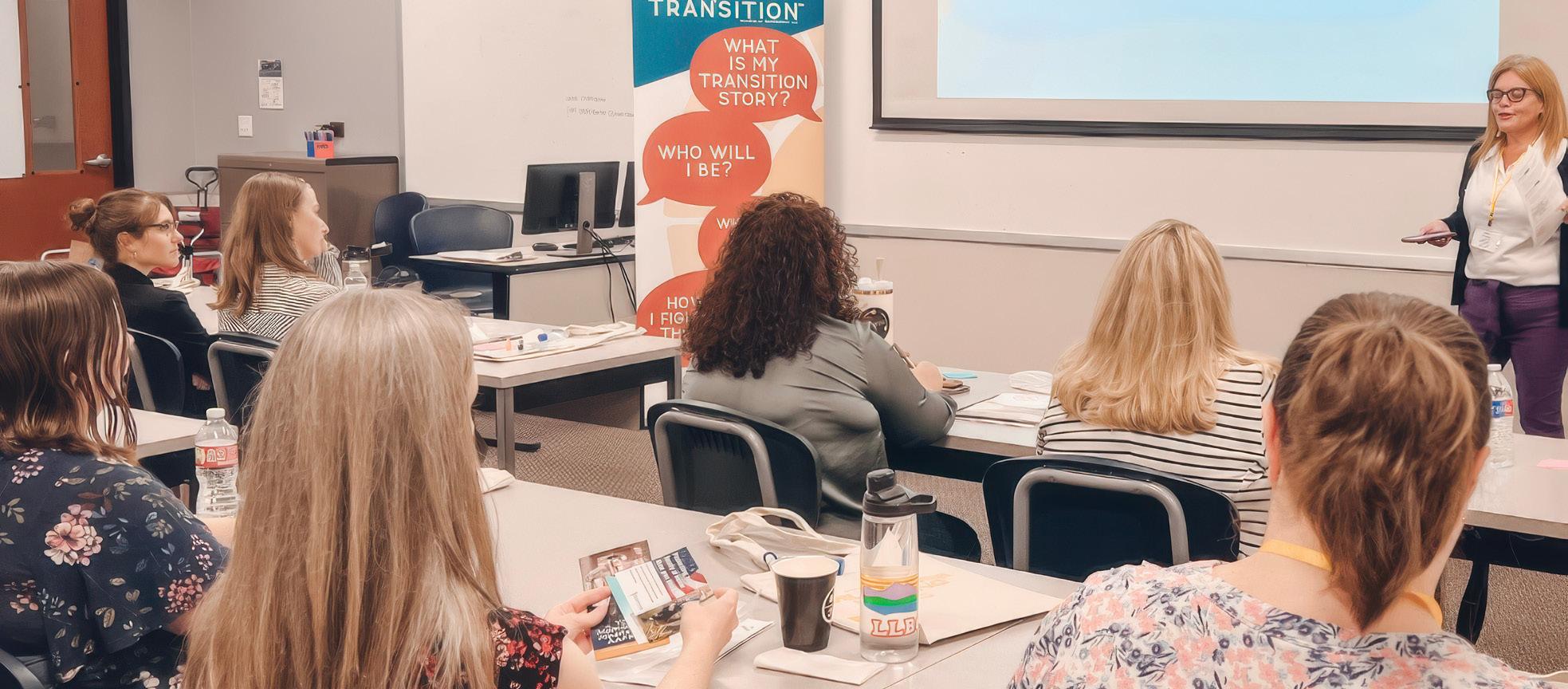
supported and seriously proud and excited about what comes after active-duty military life.
We know that every transition is going to look different. There is no set of rules or a single checklist that will work for every family. Instead, we focus on five areas of well-being—financial, career, physical, social and community.
But more importantly, we’re shifting the status quo narrative to say:
• Military spouses belong in the transition conversation. Not as add-ons, but as essential partners and leaders in their family’s transition.
• Military spouses deserve real support built with their experience and their needs in mind. A place to say, “This is hard” and still be met with encouragement, actionable help and a dose of humor about “the suck”.
• Military spouses are already equipped with unique strengths. Call it grit, resourcefulness, creativity or adaptability—we help them name those strengths, own them and use them to build a life they’re excited about.
We’re not recreating what’s already out there—we’re advocating for
military spouses to be included and building on the best of what supports a more holistic view of what transition truly is.
When done with intention, small changes can have a big impact— not just on how service members transition, but on how the entire family moves forward.
We’re already seeing movement in the area of career well-being where spouses are now more included in job fairs, resume building and career planning. Organizations offering services need to do more than quietly include us in the fine print or only when asked. And military spouses can’t stay silent and hope we’re remembered. We need to speak up, ask questions and advocate for our place in this process, being sure to include:
• Financial and relocation planning that reflects careers, households and caregiving responsibilities;
• Benefit information provided by the VA and during TAP sessions;
• Roles and responsibility conversations where family dynamics are discussed;
• Mental and emotional health needs and the right resources for your family
• And so much more.
This isn’t about being demanding for the sake of it. Because the truth is simple: when spouses are part of the plan, the entire family transitions stronger.
If your organization supports military spouses in transition or veteran spouses after transition— or if you’re a veteran spouse with a story to tell—we’d love to hear from you.
Visit milspousetransition.com to learn more about our mission, explore resources or submit an article that highlights how you’re supporting the spouse’s side of the story. Every share, every experience and every time we raise our voices, we push this conversation forward.

Anna Larson is the founder of MilSpouse Transition and NomadAbout. She supports military spouses through the transition from active-duty life and helps small businesses grow with smart, strategy-driven marketing. She hosts three podcasts and is an Ambassador of Veteran Spouses for Five & Thrive, advocating for improved military family quality of life. Her work has been featured in a number of publications. When she’s not behind the mic or deep in a strategy session, Anna enjoys exploring the outdoors with her family, soaking up the sun with a good book and chasing adventures wherever they may lead.
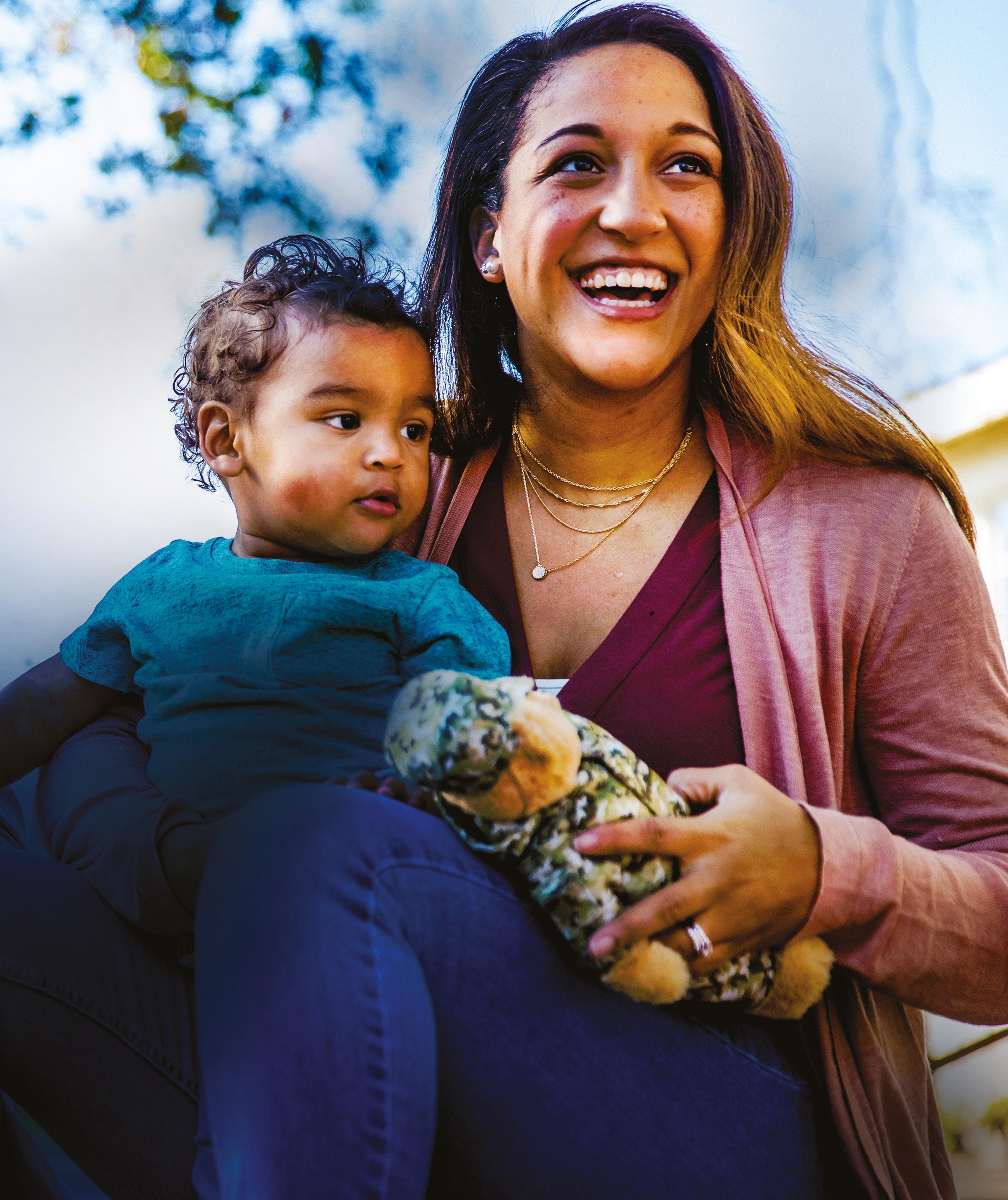


BY ERIN HODGKINSON, STYLE ADVISOR
April showers bring May flowers and the season of blooming begins. Lots of reasons to celebrate: Graduations, beach weddings and 4th of July BBQs. All these festivities bring about travel—whether on the road or in the air, we have you covered with this season's wearable trends.
Spring and summer workwear this season is all about lightweight fabrics. Blazer options are abundant in long line and cropped styles. For work, layer with a light airy textured blazer in a soft pastel hue. Pair this look with a matching ballet flat or loafer to embrace the freshness of the sun.
For bottoms, wide-leg trousers in linen and cotton blends along with flowy midi skirts keep things cool. Be sure to pair this style with a well-fitted top to balance the outfit.
Consider adding delicate details to your wardrobe with tops that feature crochet or pointelle to bring a warm weather feel to your closet.


Trends this year are continuing to embrace the timeless elegance of quiet luxury, coastal grandmother and old-money aesthetics. These styles focus on understated sophistication, with a nod to effortless yet refined fashion. Raffia handbags are making a major comeback, perfectly complementing this trend with their natural textures and classic appeal.

This season’s wedding guest fashion draws on elements that perfectly enhance the romantic ambiance of the big day. Bold, oversized florals are making a statement, stripes and botanical prints bring a fresh, natureinspired touch, adding depth and character to the overall aesthetic. Cascading ruffles and delicate eyelet details create an unforgettable look that beautifully complements the wedding environment.


Opt for block heel sandals for outdoor events— they're both stylish and practical, providing stability for walking on grass or sand, where traditional heels can easily sink.

Erin Hodgkinson is a globally certified stylist with experience working on live TV and content shoots. She is currently a Styling Specialist for an Incubator Team.

BY FADOUA HARRABI
The transition from military service to civilian life is often framed around the experiences of veterans themselves—the sense of loss, the struggle to reintegrate into society and the challenges of adjusting to life out of the uniform. However, one group whose story often goes untold is the spouses of veterans and retirees. We rarely hear from those who have supported their service members through deployments, relocations and the rigors of military life. So, what happens when these spouses, too, make the shift from active-duty life to the civilian world? How does their new status as veteran spouses shape their personal growth and experiences?
To answer these questions, I spoke with Jenna, Sasha, Lori and Rebecca, four military spouses who have navigated this transition. Here’s what they had to share about the benefits and challenges of life after retirement.
When asked how becoming a veteran spouse impacted their personal growth, a common thread emerged: a sense of appreciation for both the journey and the opportunities ahead. The transition allowed them to reflect on the strength developed during their time in the military and to turn their focus inward.
Sasha Savage, Marine Corps veteran spouse, who is married to a post-9/11 veteran with disabilities, shared that while caregiving has been challenging, it has also deepened her resilience. “It still gets hard, and that’s when you need your community for support,” she said.
Lori Johnson Vegas, a military spouse and daughter of a career Air Force member, also highlighted similar lessons. “I’ve learned to be open, receptive and respectful of those who are different from me,” she said, noting how those qualities helped her adjust to frequent relocations.
Retiree/disabled veteran Navy spouse, Jenna Levin found a new sense of peace post-retirement. “Living a normal, boring life is just so nice,” she said. “No more unpredictable schedules, no more deployments,” shared Levin. “I didn’t realize how much stress we were carrying until it was just gone.”

Rebecca Hodge, Army retiree spouse, echoed these sentiments, saying that the new chapter in her life gave her the space to reflect and focus on herself. “For so long, I focused on supporting my spouse’s military journey, but this new chapter has allowed

me to turn that energy inward, building my own career and stepping into my potential.”
Military spouses are often the unsung heroes, managing household responsibilities, finances and child-rearing while their service members are deployed or working long hours. This balancing act can be incredibly taxing, but the dynamic shifts after retirement. Levin noted that now, she and her husband share the responsibilities more equally. “We value the little things more now—having the same days off, going grocery shopping together or knowing we can make plans in advance,” Levin said.
Vegas, who chose to remain involved with military life post-retirement, serves on multiple military nonprofit boards and is active in several organizations that support military spouses. Vegas indicated during the interview that they live close to a military installation, and continue using the facilities and attend local military events. She added, “We live in a heavy military retiree state, so the retiree spouse community is big and bold.”
Despite facing many unknowns, military spouses approaching the transition have many opportunities
and resources available to them through familiar programs like the MyCAA and the Post-9/11 GI Bill transfer. Others, like Transition Employment Assistance for Military Spouses (TEAMS) that provide workshop training sessions, are less familiar. All agreed that these and other programs were instrumental in advancing their education and careers. Levin, for example, used Dependents’ Educational Assistance (DEA) also called Chapter 35 benefits to continue her education, while Savage leveraged dependent benefits to earn a Project Management Professional (PMP) certification and complete her master’s degree. Hodge took advantage of the VA’s Vocational Rehabilitation program to earn her bachelor’s degree. Vegas used the GI Bill to complete her doctorate.
Savage also highlighted the importance of organizations that helped navigate veteran benefits. The Wounded Warrior Project, she said, provided invaluable support for both mental and physical health, while groups like the Rosie Network and the Association of Military Spouse Entrepreneurs equipped her with the tools to thrive as a military spouse entrepreneur.
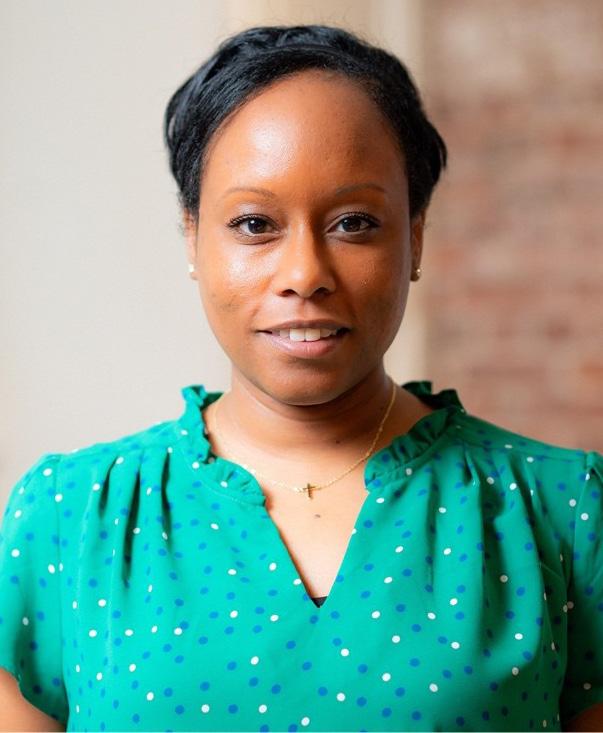
For many, the greatest benefit of retirement is the gift of time. Levin, who no longer has to contend with the constant uncertainty of military life, expressed deep gratitude for the chance to “just exist in the same space” with her spouse. “Now we can do all the things we always wanted to do, like exploring San Diego, cooking dinner together or simply lounging in bed on a Saturday morning,” she said.
Hodge shared a similar sense of relief. “We were finally able to plant roots,” she said. “We bought our ‘forever’ home and made it our own. Our kids have been in the same school district for three years, which is a huge milestone.”
Savage also appreciated the ability to finally settle down, saying that the VA loan helped them secure their first home.
For the spouses I interviewed, the military may have been challenging and disruptive at times, but the benefits they gained from it extend beyond the tangible perks of health care and education. They remain deeply connected to the military community, and their bonds are still felt today. “We still keep in touch with my husband’s active-duty friends,” Levin said. “I know he appreciates that.”
Savage, quoting an African proverb, captured the sentiment shared by all: “If you want to go fast, go alone. If you want to go far, go together.” She added, “As a military spouse, finding my niche community has been a joy I never realized I needed.”
Hodge also echoed this sentiment: “There’s a unique bond in the military community—a deep sense of understanding and support—that stays with you long after the uniforms come off.”
Even after retirement, military families remain tied to the larger military community. Vegas and her husband continue to attend military events like the Air Force Ball and promotions ceremonies. As they all expressed, the transition to civilian life is not an end, but rather the beginning of a new chapter— one that is still intertwined with the values, friendships and experiences of military life.

Fadoua Harrabi is a linguist, communicator and passionate community advocate dedicated to supporting military families. With a diverse background in education, nonprofit work and advocacy, she has contributed her expertise to organizations such as Marine Corps Community Services, the Military Spouse Advocacy Network (MSAN) and the Foreign-born Military Spouse Network (FMSN). She has also served at the U.S. Department of State for close to seven years before she relocated to the U.S. to be with her husband, an activeduty USMC service member.
Originally from Tunisia, Fadoua brings a deep, personal understanding of the challenges that come with relocating and adapting to new environments. Her lived experience fuels her commitment to strengthening military-connected communities and amplifying the voices of those often overlooked.



We’d like to talk with you about career opportunities at Wells Fargo!
Scan the QR code to Learn more and join the Military Spouse Talent Community at:

The following recommendations emphasize the need for a coordinated approach that mirrors the military community’s effort to understand and support currently serving spouses. Although military family quality of life efforts no longer apply as a military family transitions, the care we show our community must extend well after service commitments end. We have it within our power to put an end to the “broken veteran” narrative, by helping military spouses through their lifecycle from day one to well after the transition.
Veteran spouses are often the unseen force behind their partner’s transition. By providing resources aimed specifically at veteran spouses we can improve outcomes not just for spouses, but for the entire military family.
Because service members can’t have a smooth transition without a smooth spouse transition.
1. Expand Research to Study the Experiences of Transitioning Veteran Spouses Beyond Caregiving Roles.
While significant progress has been made in understanding the professional and caregiving roles of military spouses during service, the same attention has not been extended to the post-service period. Research remains limited regarding how transition impacts veteran spouses’ mental health, professional development and identity formation.
Path Forward:
• Conduct comprehensive studies examining veteran spouses’ mental health outcomes, career trajectories and the psychological impact of transition.
• Partner with academic institutions and veteran service organizations to collect data on veteran spouses’ professional and personal reintegration.
• Focus research efforts on overlooked areas such as dual transitions (e.g., navigating post-military employment while managing family changes).
2. Strengthen Community Support by Broadening Eligibility to Existing Resources and While Developing New Resources.
Military spouses transitioning to veteran status often experience an acute loss of community—a network that provided emotional and professional
support during active duty. Simultaneously, veteran spouses face challenges integrating into their new communities. The absence of organized support systems in these areas compounds isolation and hinders their ability to access professional opportunities.
Path Forward:
• Address Emotional Loss: Develop initiatives that create veteran spouse support groups and peer-to-peer networks to maintain emotional connections. Programs should include virtual and in-person opportunities for engagement.
• Professional Integration: Work with local governments, businesses and industry leaders to establish regional veteran spouse communities. These efforts could include professional networking events, mentorship programs and job fairs tailored specifically for veteran spouses.
• Broaden eligibility for community-based programs to include veteran spouses, ensuring that resources remain accessible beyond activeduty service.
3. Extend Resources Beyond the Current One-Year Post-Service Limit.
Currently, many federal and nonprofit programs supporting military families have a one-year postservice eligibility limit, leaving veteran spouses to navigate career, mental health and financial
challenges without adequate long-term support. Research shows that transitions often create prolonged uncertainty and a one-year timeframe fails to align with the realities of reintegration. While the resources available to currently serving spouses don’t fully meet the needs of transitioning veteran spouses, they would help while the community prepares customized resources. This is a first step towards institutionalizing the military spouse transition.
Path Forward:
• Advocate for extending eligibility timelines for federal, nonprofit and private programs to at least three years post-service. This adjustment would provide veteran spouses adequate time to establish stability.
• Work with federal policymakers to align veteran spouse transition resources with established benchmarks for veterans’ reintegration, ensuring coordinated timelines for both spouses and service members.
• Encourage nonprofit and corporate stakeholders to adopt similar models for sustained support and accountability.
NMSN’s 2021 White Paper introduced the recommendation “to reduce unemployment and underemployment among military spouses, Congress may also wish to consider allowing military veterans to transfer their federal hiring preference points to their spouses or caregivers.”
We still believe this is a crucial step to helping veteran families have a smooth transition. Derived preference, a benefit allowing certain veterans’ spouses (e.g., disabled veterans) to leverage federal hiring preferences, sets a precedent for extending such benefits. However, many veteran spouses remain overlooked in federal hiring processes, particularly during transitions when their career needs are most acute.
Path Forward:
• Expand derived preference policies to allow all veterans to transfer hiring preferences to their spouses during the first three years post-service. This would support continuity in
career development and economic security for transitioning families.
• Partner with federal agencies to develop spouse-specific hiring initiatives that emphasize continuity, particularly for spouses with careers disrupted by frequent moves.
• Increase awareness of federal hiring preference programs among transitioning military families through targeted education and outreach campaigns.
5. Develop Tailored Transition
That Prioritize Career Preparation Over Short-Term Job Placement.
While programs like SkillBridge have successfully supported service members, transition support for veteran spouses often prioritizes short-term job placement over sustainable career preparation. Research indicates that spouses face barriers to long-term employment due to a lack of tailored tools, professional coaching and accessible resources.
• Launch spouse-specific transition programs that mirror the SkillBridge model, focusing on longterm career preparation, mentorship and skillbuilding.
• Strengthen existing federal career development opportunities like the career ladder programs (e.g., GS-7 to GS-11 pipelines) that enable currently serving spouses to secure and retain upwardly mobile employment throughout the transition.
• Implement early transition preparation tools for currently serving spouses, helping them assess skills, identify career paths and access resources prior to separation.
• Develop a centralized resource hub that connects veteran spouses to federal, corporate and nonprofit programs, streamlining access to professional opportunities.
By addressing these critical gaps, we can ensure that military spouses not only survive but thrive during their transition to veteran status. Read the White Paper
BY DR. TAHEESHA QUARELLS AND BETH AUSTIN
It’s your turn…now what?
For many veteran spouses, going back to school after 30 isn’t just about finishing a degree—it’s about reclaiming a dream, pivoting to a purpose-driven career or finally investing in you. Life may have taken a backseat to duty, sacrifice and support for your service member, but the road ahead is filled with opportunities tailored to adult learners like you.
How can veteran spouses thrive in education—no matter their age or stage?
1. Shift from “Traditional Student” to “Strategic Learner”
Today’s learning isn’t confined to four-year degrees or rigid classrooms. Micro-credentials, boot camps, industry certifications and stackable credentials are disrupting the status quo.
Ask yourself:
• Do I need a degree, or do I need employable skills?
• Could a 12-week boot camp in tech, user experience (UX) design, human resources (HR) analytics or digital marketing offer a faster return on investment?
Hot Tip: In addition to the resources available on Military OneSource which are available for the year following transition, check out platforms like Coursera , edX and Google Career Certificates—many of which are
free or low-cost with scholarships for military families.
2. Leverage MilitaryConnected Learning Ecosystems
You don’t need to navigate this alone. Organizations have created tailored programs just for you:
• Onward to Opportunity (O2O) – Free career training programs that provide certification in areas such as business, IT and cybersecurity, as well as employment support, and career coaching.
• MilSpouse Coders –Free tech education, mentorship and remote job opportunities in the industry.
• Career Forward – Free access to Google Career Certificates, career support services and employer connections.
These programs are built with flexibility and career outcomes in mind—no guesswork required.
3. Design for Your Life, Not a Perfect Schedule
Your journey is unique. Some spouses juggle toddlers, caregiving, part-time jobs—or all three. Instead of forcing yourself into a rigid academic timeline, design your education around seasons of capacity and growth.
Flexible options to explore:
• Competency-based education (CBE): Work at your own pace and finish faster.
• Asynchronous learning: Classes you can do after bedtime routines and work hours.
• Modular learning: Earn shortterm certificates that build toward degrees over time.
Financial barriers can stop dreams before they start. But you’ve got more support than you think:
• VA education programs such as the Post-911 GI Bill (Chapter 33) or Dependents’ Educational Assistance (Chapter 35) . If eligible, some programs can cover tuition, housing and books.
• Apply for federal financial aid such as the Pell Grant.
• State veteran spouse tuition waivers or scholarships
Check your state’s Department of Veteran Services or spouse support programs.
• Military-connected student scholarships may be available at your institution
Check with your school’s financial aid office and military/veteran center.
• Search for military spouse scholarships using sites such as fastweb.com or careeronestop.org .
Pro Tip: Target your search by using phrases like “returning adult student scholarships” or “nontraditional student scholarships”—many of the resulting programs are designed for learners 25+.

You’re not “starting over”. You’re leveling up with real-world experience behind you. Build a personal brand that reflects:
• Problem-solving under pressure.
• Leadership in family and community settings.
• Adaptability from frequent relocations.
Action Step: Update your LinkedIn profile to reflect your education goals and transferable skills. Plug into the veteran military spouse community or join interest groups that share job leads and accountability.
6. Learn With a Purpose, Not Just for a Credential
Before choosing a program, ask:
• What’s the earning potential in this field?
• Does this path support location independence (remote/hybrid work)?
• Can this credential lead to entrepreneurship or freelancing?
Fields like project management, HR, data analytics, software development and medical billing are booming—and many roles
are remote-friendly, portable and pay well with minimal training time.
7. Redefine Success on Your Terms
Education after 30 doesn’t have to look like a full course load, a 3.9 GPA or a linear path. It can mean:
• Taking one course every eight weeks.
• Passing your first industry exam after years away from school.
• Starting a small freelance business with skills learned online.
Success is progress. One step forward is still forward.
Final Word: You’re Not Late. You’re Right on Time.
Going back to school in your 30s or beyond is an act of courage—and strategy. You bring a depth of experience, emotional intelligence and drive that traditional students are just starting to build. Education today is built for flexibility, innovation and access—and you are exactly who it was built for.
Whether you want to thrive in a corporate career, pivot to entrepreneurship or simply explore a long-held interest— your time is now.
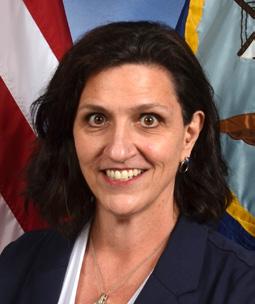
Beth Austin is the spouse of a retired service member. She has dedicated her career to supporting the educational and career development pursuits of militaryconnected learners.
BY JENNIFER BARNHILL

Military spouses don’t just support from the sidelines—they lead, advocate and invest in the communities they call home. In Colorado Springs, Kimberly Gold has proven just that, securing a seat on the City Council to represent District 4 in the April municipal elections.
Gold, who currently serves as president of the Colorado Springs Black Chamber of Commerce and was named the 2024 Armed Forces Insurance Army Spouse of the Year, earned 39% of the vote.
Her campaign emphasized issues that hit close to home for many families—economic development, public safety, affordable housing and infrastructure. And for Gold, it wasn’t just about winning. It was about showing up for her neighbors.
“I am deeply honored and humbled by the trust the residents of District 4 have placed in me,” said Gold. “This campaign has always been about building a stronger, more inclusive Colorado Springs, and I’m eager to begin working on behalf of all our residents.”

Gold’s leadership is rooted in community. As head of the Colorado Springs Black Chamber of Commerce, she has championed minority-owned businesses and cultivated economic opportunities across the region. But her service doesn’t stop there. As the spouse of an Army noncommissioned officer, she’s intimately familiar with the challenges and contributions of military families—especially in a city home to five military bases including Fort Carson and Peterson Space Force Base.
Her journey to public office reflects a broader truth: military spouses mean far more to our local communities than many may think of such a transient population. Military spouses are integral to the communities in which they live, bringing the value of service, adaptability and determination—traits Gold has embodied both personally and professionally.
Originally from a military-connected background herself, Gold understands what it means to plant roots quickly and make an impact. From being a military child to an Army spouse stationed at Fort Carson, Gold has made Colorado Springs her home. As a military spouse, she has spent years advocating for military families and veterans, using her platform to connect service members’ needs with local policy solutions. Her recent national recognition as the 2024 Armed Forces Insurance Army Spouse of the Year underscores that commitment.

“I want to thank my opponents for running a spirited campaign focused on the issues that matter to our district,” Gold added. “I also want to express my deepest gratitude to my family, volunteers and supporters who made this victory possible. I’m ready to roll up my sleeves and get to work for the people of District 4 and all of Colorado Springs.”
Military spouses may not wear the uniform, but their service is unmistakable—and Kimberly Gold’s election is a powerful reminder of the enduring impact we leave behind.

Jennifer Barnhill is a columnist for military. com and the host of Military Dinner Table Conversations , a monthly reverse town hall with military families. She is the 2025 Armed Forces Insurance Navy Spouse of the Year, a 2023 Bush Institute StandTo Veteran Leadership Program Scholar, the editor-in-chief of the National Military Spouse Network ’s Career Connections Magazine and the military spouse liaison on The League of Wives Memorial Project.
BY SHARON KOZAK
Every service member’s transition is distinct and shaped by their circumstances. Whether they are retiring after two decades of service, experiencing an unexpected medical separation or expanding their family, a shared challenge is the search for a new identity and the adjustment to a different normal. And for many, transitioning out of the military can leave families with more questions than answers. This article explores how different military families navigated their service member’s transition out of the military, revealing shared challenges around identity, employment and family stability.
To better understand these and other challenges, I interviewed five veteran and retiree families. Retired Petty Officer Second Class Brandon and active duty Chief Nicole Bailey have been married for 14 years, many of them as a dual military couple. Brandon Bailey served for 16 years before medically retiring from the Navy in 2023. Retired Chief Robert and Mrs. Jaimie Clark have been married for 17 years with Robert serving for 20 years before retiring from the Navy in 2024. Chief Vince and Mrs. Sarah Porritt were a dual military couple who served in different duty stations until Sarah left the Coast Guard in 2024 while pregnant with their son. Retired Staff Sergeant Robert and Mrs. Melissa Stahl have been
married for nine years with Staff Sergeant Stahl serving for seven years until medically retiring from the Army in 2020. Retired Chief Warrant Officer 2 Andrew and Mrs. Hollie Youngblood have been married for 28 years with Andrew Youngblood retiring from the Marines in 2014 after 20 years of service.

Each of these couples represents a wealth of information and experience, experiences they shared with me that I now share with you. They transitioned from
military to civilian life, managing career changes and deciding where to live while finding new identities beyond the ones they formed during their service.
A question often asked is “What keeps you up at night?”. This is a fitting question for this underexplored topic. Being financially sound while transitioning was the overwhelming concern expressed by those I interviewed. And research shows they are not alone. According to a 2022 survey, the top challenges facing veterans in the transition to civilian life are finding a job (33%), parting ways from military friends (28%) and finding a purposeful career (28%).
Identity was another top concern expressed by those I interviewed. Both Robert Stahl and Sarah Porrit decided to make the most of the transition by going back to school and focusing on developing new hobbies. Robert Clark coaches his sons’ sports teams and still gets to put on his uniform every day as the Naval Science instructor at the local high school. However, not everyone struggles to find new identities post-service. Andrew Youngblood and Brandon Bailey were not worried about their identities post-military life.
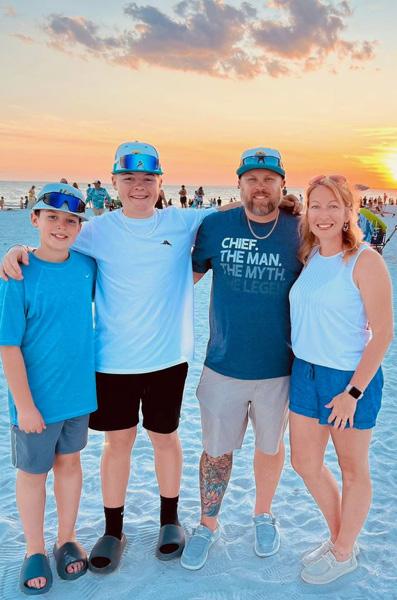
Rather, they found the hardest part of the transition was deciding what their next job would be. There was excitement among all five families as they approached the transition. They knew it meant getting to spend more time together, predictable schedules that allowed them to plan vacations and more. They were also excited about the small stuff, Brandon Bailey looked forward to finally growing a beard.
To support this transition, the military offers Transition Assistance Program (TAP) courses designed for service members, but spouses are also welcome to attend. Course topics range from understanding and applying for veterans benefits to financial planning and career readiness. Because the five couples involved in this article
were concerned with finding a new job, they made family decisions accordingly.
Two of the families did not fully leave military service as the Bailey and Porritt families were dual military, so only half of their family transitioned. But they experienced a very unique transition, going from an activeduty military service member to a military spouse. No matter if you are leaving the military as a family or stepping into a new role as a military spouse, preparation is crucial.
Luckily, service members and spouses are used to having to be prepared to move at a moment’s notice. Deployments, training exercises and last-minute PCS moves are part of daily life for military families. Robert Clark experienced a “smooth transition” that he credits to resume preparation and TAP courses.
“Ensuring continued access to health care and understanding the benefits available through the Department of Veterans Affairs (VA) is crucial,” said Clark, who believes it was this access that helped him throughout his transition. Like Robert Clark, Brandon Bailey utilized TAP classes to prepare for the move to civilian life and felt they “set [him] up for success.” Clark and Bailey took advantage of what the military had to offer and were prepared to transition out of the military, but not all transitions are planned.
Medical retirement can come at a moment’s notice and leave even the most prepared families with a sense of uncertainty. Retired Staff Sergeant Stahl was medically
retired after seven years of Army service.
“There was not much preparation for me outside of medical appointments,” said Stahl. “There were multiple different dates given for my retirement, so I did not know when I would separate officially because dates changed.” Similarly, Andrew Youngblood took a class to help with the transition of leaving the Marine Corps but had difficulty finding a job.
“I thought finding a job would be super easy with how patriotic America is, but I was wrong,” said Youngblood. “In one interview I was asked if I had a degree because it would show that I could stick with something, like 20 years in the Marine Corps did not prove that.”
Sarah Porritt’s preparation was different because she transitioned out of the Coast Guard under the Separation for Care of Newborn Children (CNC) program . Although she did not have much time to prepare for separation due to not being at her expected end-of-service date, she stated that she “met

the requirements of the program because I was pregnant with our son and stationed four hours away from my husband’s duty station.” As with these service members, spouses prepared differently.

Spouses, like service members, experience a transition from military to civilian life. Two of the five spouses were also veterans who are still involved in their partner’s active-duty military life. The other three civilian military spouses experienced transitions differently and were focused on helping smooth their family’s transitions in their own ways.
Despite not being in the military herself, Jaimie Clark attended the TAP training with her husband, taking full advantage of the program’s invitation to military spouses. She focused on the “financial aspect of their life so my husband could focus on retiring.” Melissa Stahl’s preparation, like her husband’s, was marred with uncertainty. She stated, “I had to find a job right away since we had
no idea when he would actually get out or when disability would start.” Hollie Youngblood took the lead in preparing to move from their final duty station. “I made sure the house was clean and ready to be packed, picked up school and doctor records for the move, at this time we had five kids,” said Hollie.
According to an article by Kevin Lilley for the Military Officers Association of America , there are many factors that retirees and veterans consider when selecting a new home state. The top categories of interest, according to the May 2024 article, are job opportunities, affordable health care and housing. MOAA cites Wallet Hub’s findings that South Carolina is the most veteranfriendly. But other reports say South Dakota is the best, using different measurements
Clearly, choosing what state is best for veterans is subjective. Some veteran families choose to live in their last duty station based on proximity to family and career opportunities. For the families interviewed for this article, two (Porritt and Bailey families) still had military orders due to being dual military families, so where they live is still subject to the needs of the military. The Stahl family Melissa, an educator and Robert, who started school for forensic psychology chose their last duty station based on where they could find work and develop their careers. The Clark family selected their home state for Robert Clark’s last tour in the Navy, allowing him to begin retirement with the support of family and
friends. Hollie and Andrew moved their family back to Andrew’s home state to be closer to family and to ensure they sent their kids to good schools.
Rediscovering your identity and a new career at any stage of life can be intimidating, but these military families have shown how life can be fulfilling both inside and outside the military. The most important suggestion given by the service members and their spouses was to take advantage of the Transition Assistance Program to prepare for life in the civilian sector and to lean on your command for help. While understanding VA benefits, navigating new employment opportunities and choosing where to live permanently can be daunting, research and preparation helps. Finally, whether leaving the military through medical retirement, conventional retirement or familial changes, your family’s service is noticed and appreciated.

Sharon Kozak is a military spouse who has dedicated herself to the improvement of military marriages, and mental health and telling the stories of families. With a master’s degree in teaching and finishing her second in marriage and family therapy, she currently serves as a marriage coach for the Full Range Foundation while volunteering as a command ombudsman, ombudsman assembly chair and podcast deputy director for Naval Service FamilyLine. She is also a freelance blogger, writer and researcher dedicated to the connection between marital satisfaction and post-deployment mental health.
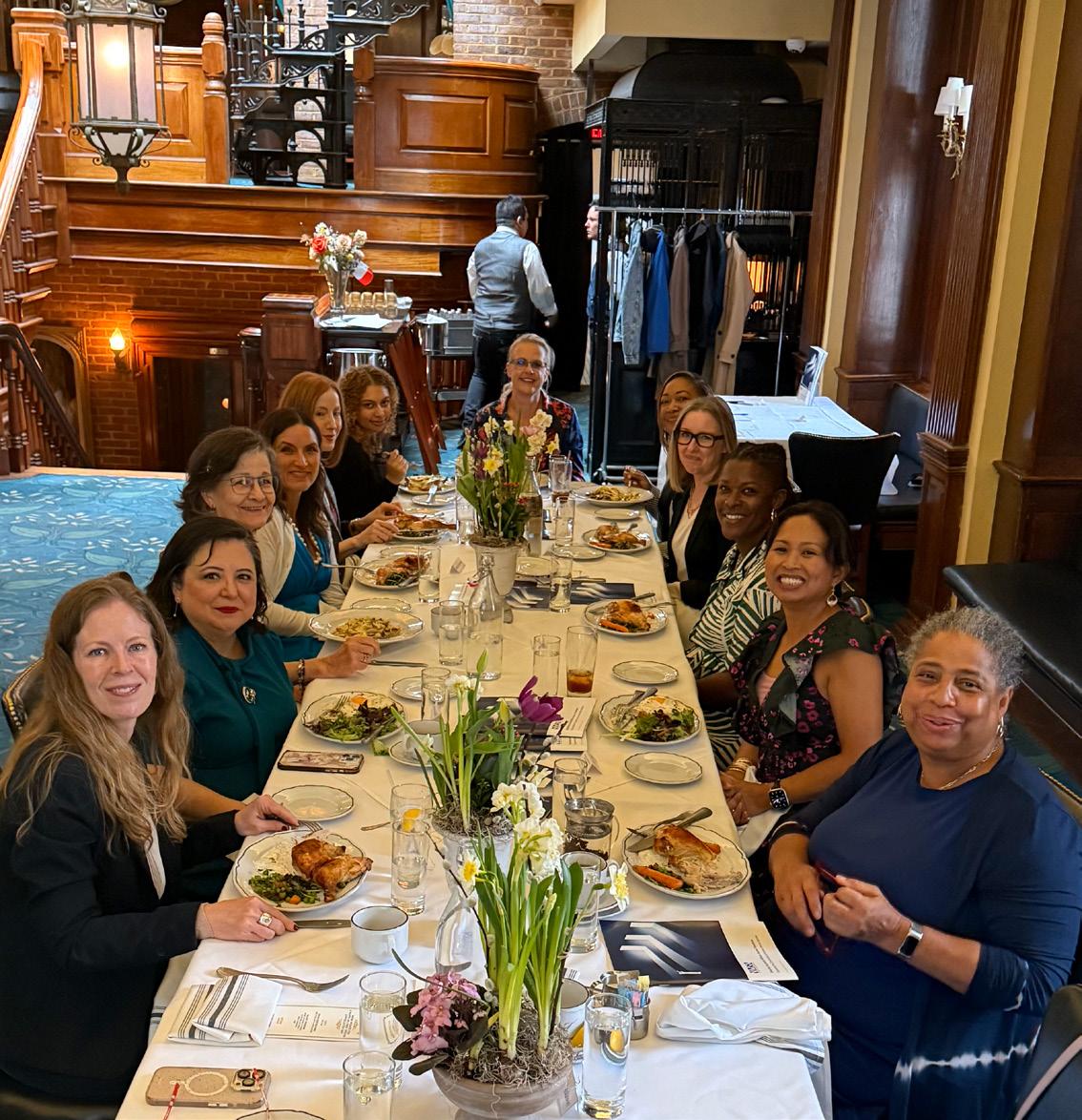
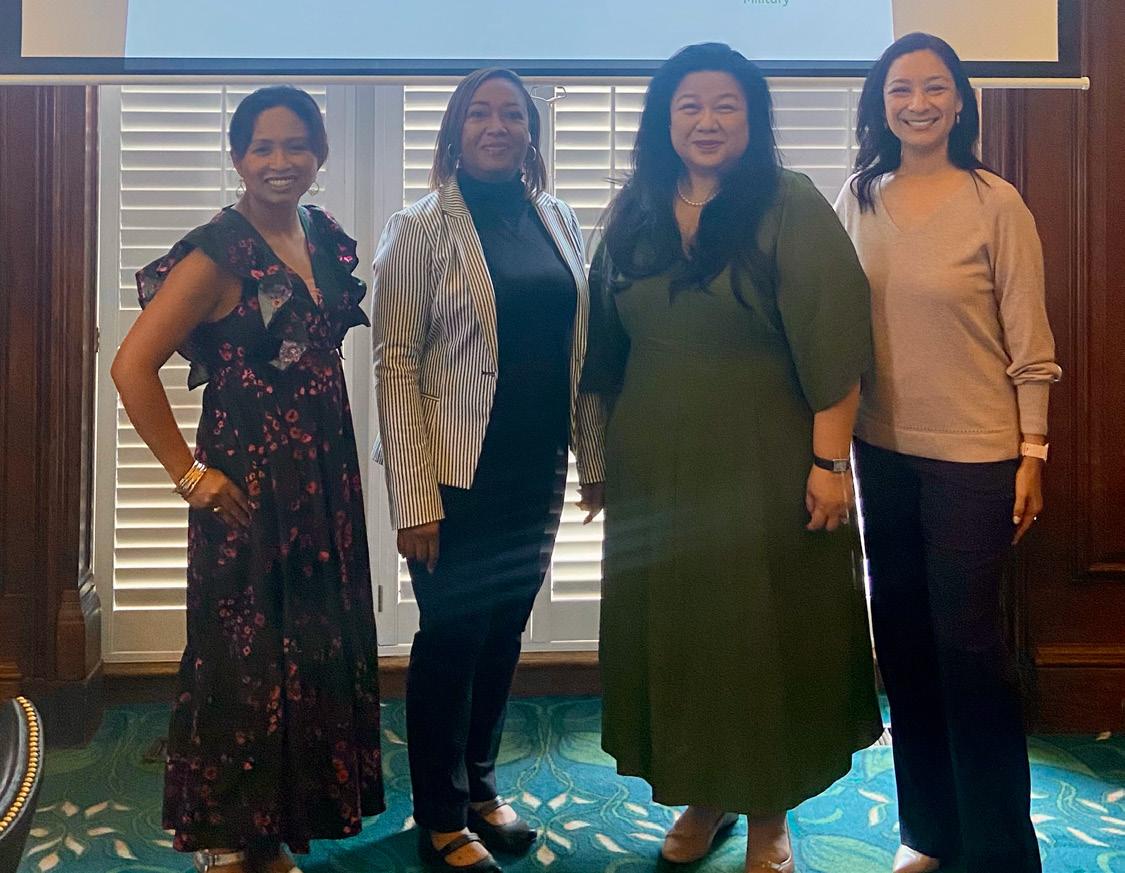



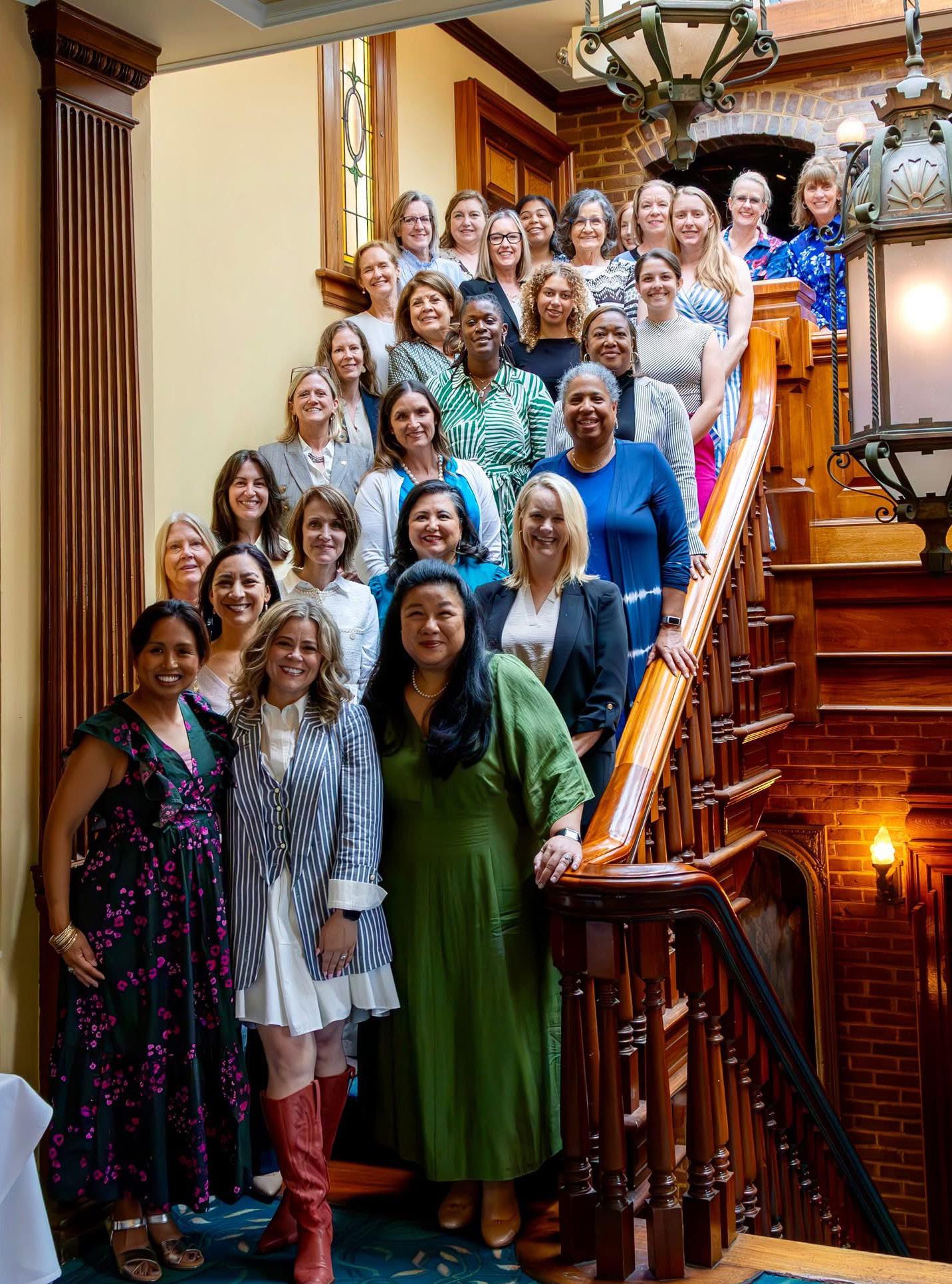

Opportunities are out there for military and veteran spouses! To get connected, use creativity and perseverance, and don't hesitate to ask for help!
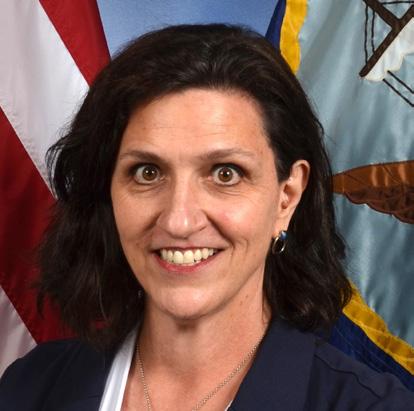
Telling your own story is scary. You will get people who tell you that your own experience is wrong. But, those people are just afraid that the power of your story will force them to change. Keep sharing and working towards positive change.


Never doubt the value you bring—your adaptability, resilience and strength are exactly what today’s workplaces need. I’ve seen firsthand how military spouses empower teams, elevate cultures and transform organizations across every workcenter, from community hubs to corporate boardrooms— you belong in them all.

One thing that I want to share with NMSN readers for visual branding: If you haven’t already, start putting together a portfolio of strong photos to communicate your story to your target audience in an effective and compelling way. It should answer the following questions: Who are you? What do you do or what product/service do your provide? Where are you located? What areas do you serve? Why do you do what you do?

I like to consider myself an expert in cross-cultural communication and research. That said, just when you think you've mastered everything there is to know about military life, something new always emerges. The military spouse community is constantly evolving—there's a subtle yet powerful current of change. Military spouses today are more vocal, tenacious and impactful than ever, shaping the narrative and driving meaningful progress, and I could not be prouder.
Don't navigate career moves alone—use the myriad of free support available to you. American Job Centers, Military Spouse Employment Partnership and the Employment Navigator Partnership and Program are great places to get career coaching, resume help and connection to military spouse hiring initiatives.
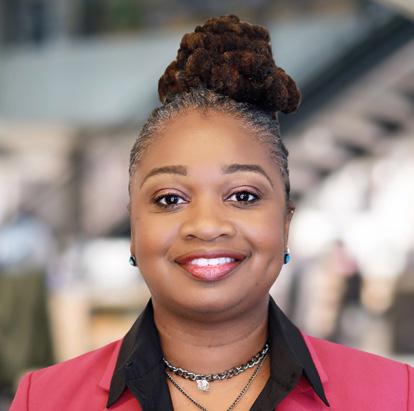
As marriage coach, I want to encourage NMSN readers to advocate for your family and your marriage.


As military spouses, adaptability is second nature and your wardrobe can reflect that same strength and flexibility. Investing in a versatile, seasonless wardrobe ensures that no matter where life takes you—from warm to cold climates, or from casual to professional settings—you’re prepared.
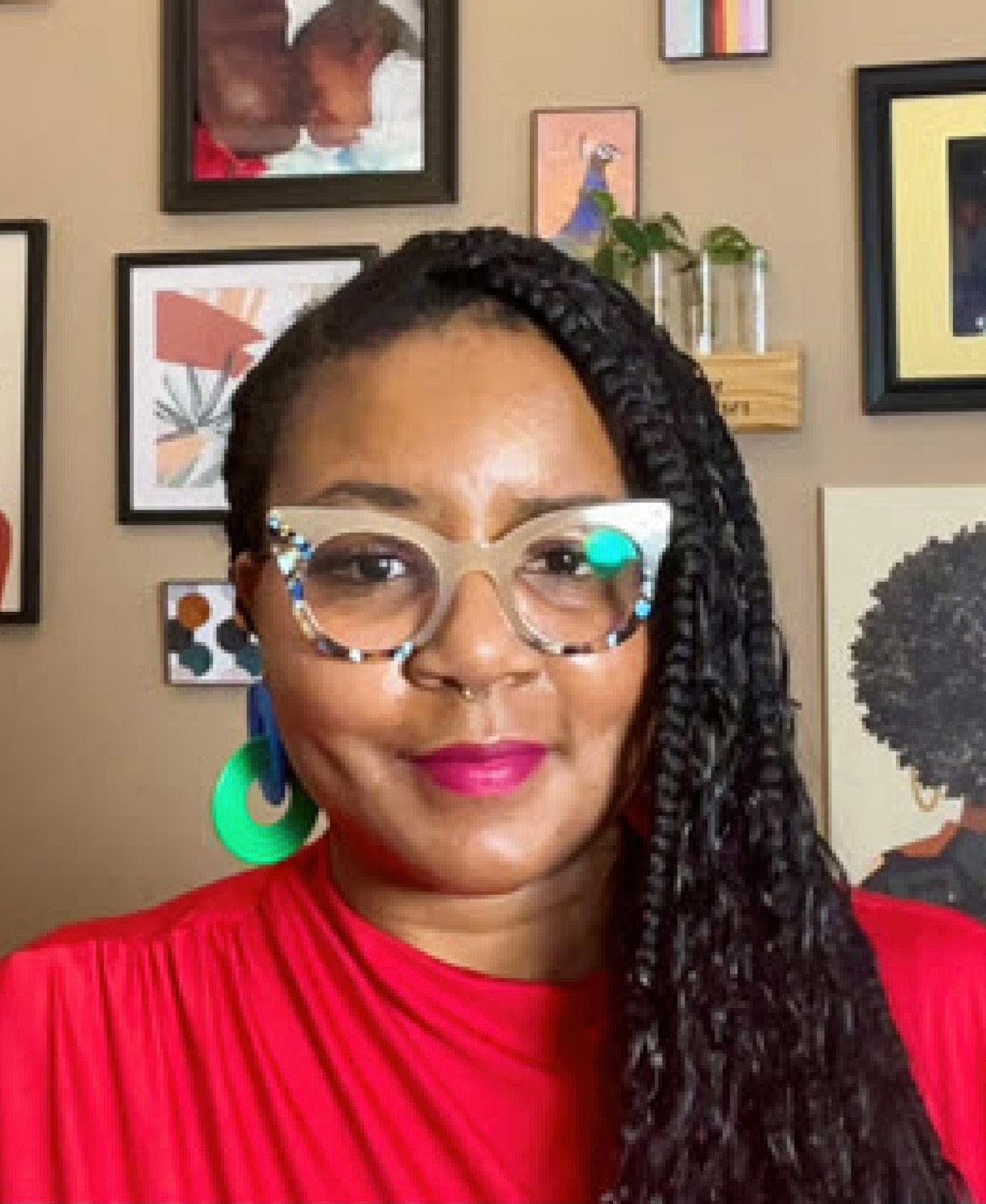
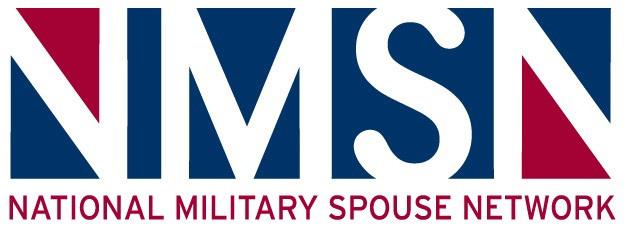
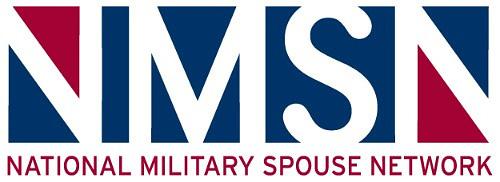


Realtor and Managing Broker Service Member's Branch and Status - Army, Retired
What has been your biggest military spouse career struggle & how did you overcome it?
IN 1998, AFTER HAVING MY FIRST CHILD, I DESPERATELY WANTED TO WORK FULL-TIME. I NETWORKED WITH ANOTHER MIL SPOUSE, WHO WORKED FOR FORD CREDIT IN COLORADO SPRINGS. SHE CONNECTED ME TO A MANAGER, WHO WAS ALSO A MIL SPOUSE, AND I WAS IMMEDIATELY HIRED. IN THREE YEARS I WAS PROMOTED SEVERAL TIMES, FROM A LEVEL 2 TO A LEVEL 7, WITH MY LAST JOB BEING AN OPERATIONS MANAGER OVERSEEING $1B OF COLLATERAL AND 100+ EMPLOYEES.
